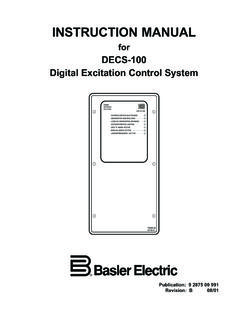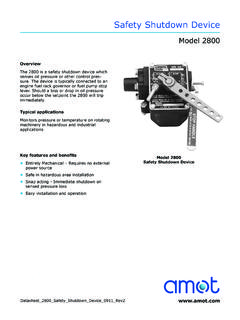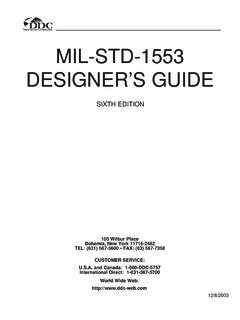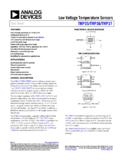Transcription of Installation and Operation Manual - Elliptical
1 Installation and Operation Manual 2301A Speed Control Manual 82020 (Revision C) DEFINITIONS This is the safety alert symbol. It is used to alert you to potential personal injury hazards. Obey all safety messages that follow this symbol to avoid possible injury or death. DANGER Indicates a hazardous situation which, if not avoided, will result in death or serious injury. WARNING Indicates a hazardous situation which, if not avoided, could result in death or serious injury. CAUTION Indicates a hazardous situation which, if not avoided, could result in minor or moderate injury.
2 NOTICE Indicates a hazard that could result in property damage only (including damage to the control). IMPORTANT Designates an operating tip or maintenance suggestion. The engine, turbine, or other type of prime mover should be equipped with an overspeed shutdown device to protect against runaway or damage to the prime mover with possible personal injury, loss of life, or property damage. The overspeed shutdown device must be totally independent of the prime mover control system. An overtemperature or overpressure shutdown device may also be needed for safety, as appropriate. Read this entire Manual and all other publications pertaining to the work to be performed before installing, operating, or servicing this equipment.
3 Practice all plant and safety instructions and precautions. Failure to follow instructions can cause personal injury and/or property damage. This publication may have been revised orupdated since this copy was produced. To verify that you have the latest revision, be sure to check the Woodward website: The revision level is shown at the bottom of the front cover after the publication number. The latest version of most publications is available at: If your publication is not there, please contact your customer service representative to get the latest copy. Any unauthorized modifications to or use of this equipment outside its specified mechanical, electrical, or other operating limits may cause personal injury and/or property damage, including damage to the equipment.
4 Any such unauthorized modifications: (i) constitute "misuse" and/or "negligence" within the meaning of the product warranty thereby excluding warranty coverage for any resulting damage, and (ii) invalidate product certifications or listings. To prevent damage to a control system that uses an alternator or battery-charging device, make sure the charging device is turned off before disconnecting the battery from the system. To prevent damage to electronic components caused by improper handling, read and observe the precautions in Woodward Manual 82715, Guide for Handling and Protection of Electronic Controls, Printed Circuit Boards, and Modules.
5 Woodward Governor Company reserves the right to update any portion of this publication at any time. Information provided by Woodward Governor Company is believed to be correct and reliable. However, no responsibility is assumed by Woodward Governor Company unless otherwise expressly undertaken. Woodward 1989 All Rights Reserved Manual 82020 2301A Speed Control Woodward i Contents ELECTROSTATIC DISCHARGE AWARENESS .. II CHAPTER 1. GENERAL INFORMATION .. 1 Description .. 1 Applications .. 1 References .. 2 Declaration of Incorporation .. 2 CHAPTER 2. 3 Introduction.
6 3 Unpacking .. 3 Selection of Speed Range .. 3 Power Requirements .. 4 Location Considerations .. 4 Electrical Connections .. 4 Shielded Wiring .. 5 External Adjustments .. 6 Switch Options .. 6 Installation Check-Out Procedure .. 8 CHAPTER 3. Operation AND ADJUSTMENT .. 11 Initial Pre-Start Settings .. 11 Start-up Adjustments .. 11 Adjust for Stable Operation .. 13 Speed Setting Adjustment .. 13 Dynamic Adjustment .. 13 Actuator Compensation Adjustment .. 14 Low Idle Speed Adjustment .. 14 Ramp Time Adjustment .. 14 Start Fuel Limit Adjustment .. 16 Speed Sensor Check .. 16 Droop Adjustment.
7 16 CHAPTER 4. DESCRIPTION OF Operation .. 19 Introduction .. 19 Speed Control .. 19 Auxiliary Inputs .. 20 CHAPTER 5. TROUBLESHOOTING .. 23 CHAPTER 6. SERVICE OPTIONS .. 27 Product Service Options .. 27 Woodward Factory Servicing Options .. 28 Returning Equipment for Repair .. 29 Replacement Parts .. 29 Engineering Services .. 30 How to Contact Woodward .. 30 Technical Assistance .. 31 2301A Speed Control Manual 82020 ii Woodward Illustrations and Tables Figure 2-1. Speed Range Switch .. 3 Figure 2-2. Preparation of Shielded Cables .. 5 Figure 2-3. Outline Drawing of 2301A Speed Control.
8 9 Figure 2-4. Low Voltage Plant Wiring Diagram .. 10 Figure 2-5. High Voltage Plant Wiring Diagram .. 10 Figure 3-1. Diesel Engine Performance Curve .. 15 Figure 3-2. Droop Adjustment .. 17 Figure 3-3. Droop Base Load with 5% Droop .. 18 Figure 4-1. Speed Control System .. 19 Figure 4-2. Speed Control Adjustments .. 20 Figure 4-3. Reverse Acting System .. 22 Electrostatic Discharge Awareness All electronic equipment is static-sensitive, some components more than others. To protect these components from static damage, you must take special precautions to minimize or eliminate electrostatic discharges.
9 Follow these precautions when working with or near the control. 1. Before doing maintenance on the electronic control, discharge the static electricity on your body to ground by touching and holding a grounded metal object (pipes, cabinets, equipment, etc.). 2. Avoid the build-up of static electricity on your body by not wearing clothing made of synthetic materials. Wear cotton or cotton-blend materials as much as possible because these do not store static electric charges as much as synthetics. 3. Keep plastic, vinyl, and Styrofoam materials (such as plastic or Styrofoam cups, cup holders, cigarette packages, cellophane wrappers, vinyl books or folders, plastic bottles, and plastic ash trays) away from the control, the modules, and the work area as much as possible.
10 4. Do not remove the printed circuit board (PCB) from the control cabinet unless absolutely necessary. If you must remove the PCB from the control cabinet, follow these precautions: Do not touch any part of the PCB except the edges. Do not touch the electrical conductors, the connectors, or the components with conductive devices or with your hands. When replacing a PCB, keep the new PCB in the plastic antistatic protective bag it comes in until you are ready to install it. Immediately after removing the old PCB from the control cabinet, place it in the antistatic protective bag.












